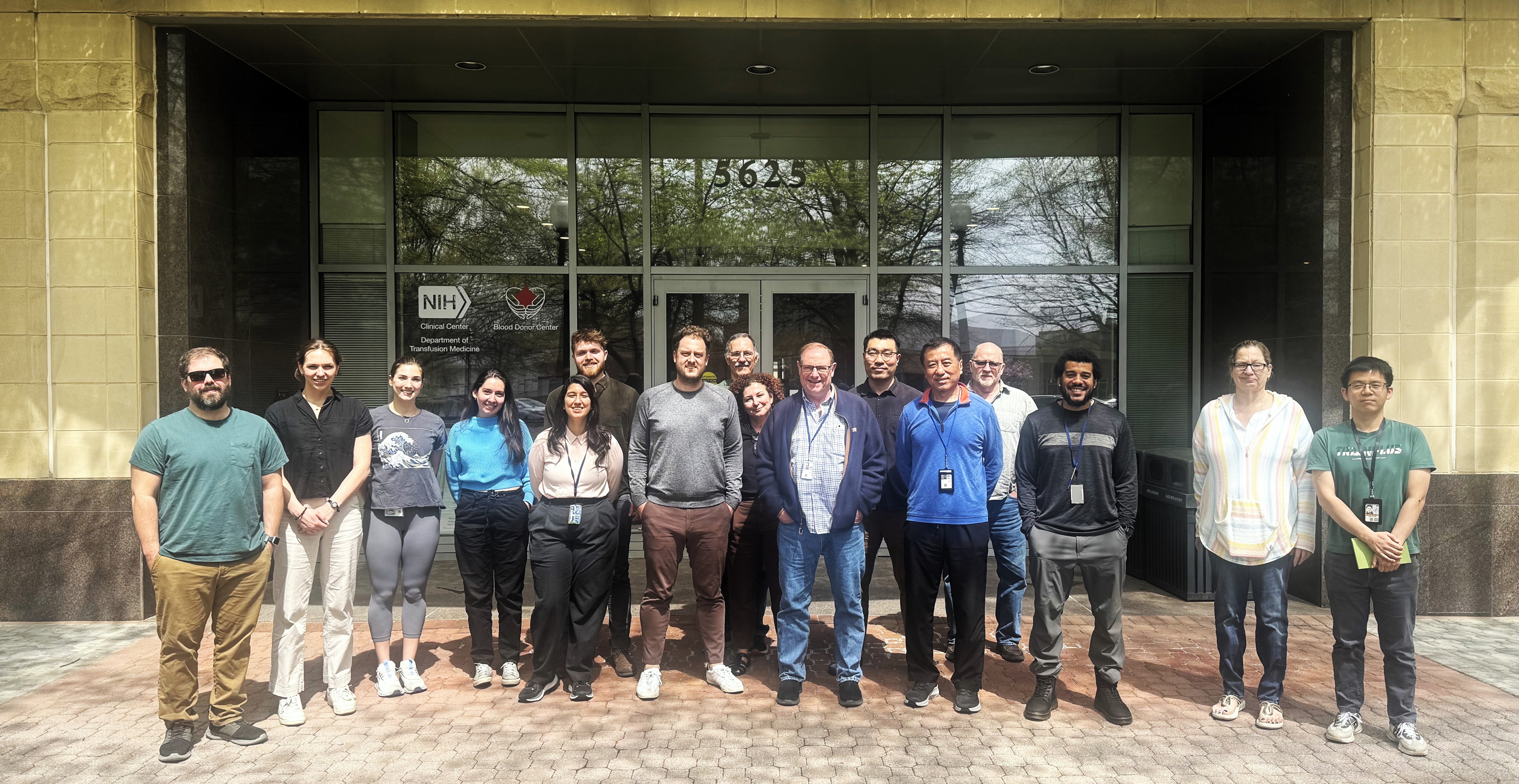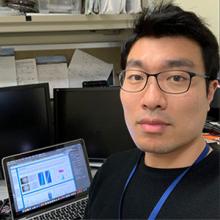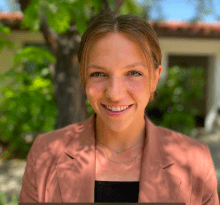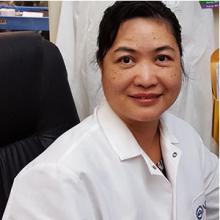Laboratory for Integrative Neuroscience


Contact Information
- Office: 301.443.2445
- Fax: +1-301-480-8035
-
Mailing Address
National Institutes of Health
5625 Fishers Lane, Room TS-13A:MSC 9411
Bethesda , MD 20892
Overview of the Lab
Research in the Laboratory for Integrative Neuroscience (LIN) examines the role of particular molecules in control of actions, acute alcohol intoxication, alcohol seeking behavior, alcohol use disorder and habitual behavior. Another aim of research in LIN is to examine the molecular mechanisms of synaptic modulation and plasticity related to action and habit learning. An important unifying theme of research within LIN is investigation of forebrain mechanisms involved in aspects of cognition and behavioral control that contribute to addiction. We seek to understand the neural basis of addiction-related brain functions such as decision-making, goal-directed behavior, habit formation and habitual behavior. We are also examining mechanisms underlying specific responses to addictive drugs, including acute intoxication and neural adaptations to chronic drug exposure, such as tolerance and dependence. Gaining an understanding of these functions will necessarily involve determining which neural circuits mediate these processes, what physiological and synaptic mechanisms underlie circuit function and plasticity, and what neural and synaptic molecules play key parts in synaptic, neuronal and circuit function. We believe that these goals can best be achieved by bringing together investigators with a shared interest in these subjects and with diverse technological expertise so that we can approach the problem at multiple levels of analysis.
We envision that the shared interests of investigators from LIN and other NAAA laboratories and the interactive nature of these laboratories, will allow different investigators to combine their expertise in the analysis of neural function at multiple levels. For example, changes in addiction-related behavior in a particular mouse model can be examined in conjunction with analysis of neuronal morphology, signaling in subcellular compartments, and neural circuit function at the micro and macro levels. Examination of molecular expression, location and function can also be applied in the same animals. Ultimately, this should allow us to gain a thorough understanding of the way in which particular neuronal molecules contribute to cellular and circuit functions that ultimately influence behavior. We also envision that interactions and collaborations with other NIAAA and NIH laboratories will enhance our ability to analyze these neural functions from the molecule to the whole mouse.
One theme that brings together the different lines of research within LIN is an interest in mechanisms of addiction and habitual behavior. We predict that gaining a better understanding of synaptic plasticity in cortical-basal ganglia networks will help us to better appreciate how information relevant to habit formation becomes encoded. Our overarching hypothesis is that effects of addictive substances on synaptic structure and transmission will interface with natural plasticity mechanisms to focus habits on drugs of abuse as well as associated stimuli and responses. Thus, understanding the neural basis of habit formation and the molecular actions of intoxicating/addictive substances will allow us to gain a more thorough understanding of addiction. Ultimately, it is hoped that these lines of research can contribute to development of better therapies for neurological disorders and alcoholism.

Lab Members











Selected Publications
- Distinct sub-second dopamine signaling in dorsolateral striatum measured by a genetically-encoded fluorescent sensor. Salinas AG*, Lee JO*, Augustin SM, Zhang S, Patriarchi T, Tian L, Morales M, Mateo Y, and Lovinger DM. Nature Communications 14, no. 1 (2023): 5915, * equal contribution
- Chronic alcohol induces subcircuit-specific striatonigral plasticity enhancing the sensorimotor basal ganglia role in action execution. Sitzia G, Bariselli S, Gracias A, Lovinger DM. Science Advances 10, no. 26 (2024): eadm6951.
- Long-term alcohol consumption alters dorsal striatal dopamine release and regulation by D2 dopamine receptors in rhesus macaques. Salinas AG, Mateo Y, Carlson VCC, Stinnett GS, Luo G, Seasholtz AF, Grant KA, Lovinger DM. Neuropsychopharmacology. 2021 Jan 15. doi: 10.1038/s41386-020-00938-8.
- Dopamine D2 receptor signaling on iMSNs is required for initiation and vigor of learned actions. Augustin SM, Loewinger GC, O'Neal TJ, Kravitz AV, Lovinger DM. Neuropsychopharmacology. 2020 Nov;45(12):2087-2097. doi: 10.1038/s41386-020-00799-1.
- Cannabinoids, Endocannabinoids and Sleep. Kesner AJ, Lovinger DM. Front Mol Neurosci. 2020 Jul 22;13:125. doi: 10.3389/fnmol.2020.00125.
- Stress and behavioral correlates in the head-fixed method: stress measurements, habituation dynamics, locomotion, and motor-skill learning in mice. Juczewski K, Koussa JA, Kesner AJ, Lee JO, Lovinger DM. Scientific Reports. 2020 July 22; 10; 12245. doi: https://doi.org/10.1101/2020.02.24.963371.
- Gestational alcohol exposure disrupts cognitive function and striatal circuits in adult offspring. Cuzon Carlson VC, Gremel CM, Lovinger DM. Nat Commun. 2020 May 22;11(1):2555. doi: 10.1038/s41467-020-16385-4.
- Alcohol effects on globus pallidus connectivity: Role of impulsivity and binge drinking. Fede SJ, Abrahao KP, Cortes CR, Grodin EN, Schwandt ML, George DT, Diazgranados N, Ramchandani VA, Lovinger DM, Momenan R. PLoS One. 2020 Mar 26;15(3):e0224906. doi: 10.1371/journal.pone.0224906.
- Operant self-stimulation of thalamic terminals in the dorsomedial striatum is constrained by metabotropic glutamate receptor 2. Johnson KA, Voyvodic L, Loewinger GC, Mateo Y, Lovinger DM. Neuropsychopharmacology. 2020 Aug;45(9):1454-1462. doi: 10.1038/s41386-020-0626-y.
- Dual Dopaminergic Regulation of Corticostriatal Plasticity by Cholinergic Interneurons and Indirect Pathway Medium Spiny Neurons. Augustin SM, Chancey JH, Lovinger DM. Cell Rep. 2018 Sep 11;24(11):2883-2893. doi: 10.1016/j.celrep.2018.08.042.
- Classification of GABAergic neuron subtypes from the globus pallidus using wild-type and transgenic mice. Abrahao KP, Lovinger DM. J Physiol. 2018 Sep;596(17):4219-4235. doi: 10.1113/JP276079.
- Alcohol and the Brain: Neuronal Molecular Targets, Synapses, and Circuits. Abrahao KP, Salinas AG, Lovinger DM. Neuron. 2017 Dec 20;96(6):1223-1238. doi:10.1016/j.neuron.2017.10.032.
- Endocannabinoid Actions on Cortical Terminals Orchestrate Local Modulation of Dopamine Release in the Nucleus Accumbens. Mateo Y, Johnson KA, Covey DP, Atwood BK, Wang HL, Zhang S, Gildish I, Cachope R, Bellocchio L, Guzmán M, Morales M, Cheer JF, Lovinger DM. Neuron. 2017 Dec 6;96(5):1112-1126.e5. doi: 10.1016/j.neuron.2017.11.012.
Other Lab Resources
ALUMNI
Staff Scientist
Margaret Davis, PhD - Retired
Postdocs
Sebastiano Bariselli, PhD - Assistant Professor, IRCCS Humanitas Research Hospital, Milan, Italy
Ilse Pamela Alonso, PhD - Postdoctoral Fellow, Louisiana State University Health Science Center
Shana M. Augustin, PhD - Assistant Professor of Pharmacology, Northwestern University Feinberg School of Medicine
Armando Salinas, PhD - Assistant Professor of Pharmacology, Toxicology, & Neuroscience, Louisiana State University Health Shreveport
Daniel Liput, PhD - Scientist, Vigene Biosciences, Ind., Rockville, MD
Konrad Juczewski, PhD – Director of Research and Commercialization, Medical Research Agency, Poland
Kari Johnson, PhD - Assistant Professor of Pharmacology & Molecular Therapeutics, Uniformed Services University
David Kupferschmidt, PhD - Staff Scientist, National Institute of Neurological Disorders and Stroke
Matthew Pava, PhD - Research Scientist in the Advanced Technology Laboratories, Lockheed Martin
Brady Atwood, PhD - Assistant Professor of Psychiatry, Indiana University
Christina Gremel, PhD - Tenured Associate Professor of Psychology, University of California at San Diego
Guohong Cui, MD, PhD - Principal Investigator, National Institute of Environmental Health Sciences
Brian Mathur, PhD - Tenured Associate Professor of Pharmacology, University of Maryland
Verginia C. Cuzon Carlson, PhD - Assistant Scientist, Oregon National Primate Research Center
Xin Jin, PhD - Tenured Associate Professor, Salk Institute for Biological Studies
Sang Beom Jun, PhD - Associate Professor of Biomedical Engineering, Ewha University, Seoul
Giuseppe Talani, PhD - Research Assistant Professor, University of Cagliari, Sardinia, Italy
Louise Adermark, PhD - Research Assistant Professor, University of Goteborg , Sweden
Henry Yin, PhD - Associate Professor of Psychology and Neuroscience/Neurobiology, Duke University
Graduate students
Giacomo Sitzia, M.A- Postdoctoral fellow, Københavns Universitet, Denmark
Jennifer Ronesi, PhD - Postdoctoral fellow, University of Texas Southwestern Medical School
Russell Morton - George Washington University
Postbac students
Noa Reuveni - UMass Chan Medical School, MD/PhD program
Stephanie Ramos-Maciel - University of Michigan Medical School, PhD program
Zev Jarrett - Vanderbilt School of Medicine, PhD program
Nina M Westcott - UNC school of Medicine, MD program
Alexa Gracias - Howard Hughes Medical Institute-Janelia Research Campus
Jacob Nadel - Northwestern University, PhD program
Lucas Voyvodic - SUNY Downstate Medical Center College of Medicine, MD program
Gabriel Loewinger - Harvard University, PhD program
Nikki Crowley - UNC School of Medicine (currently Professor in Penn State Univ.)


